Exit Interview: An Ex-Mormon Who Used to Marry the Dead
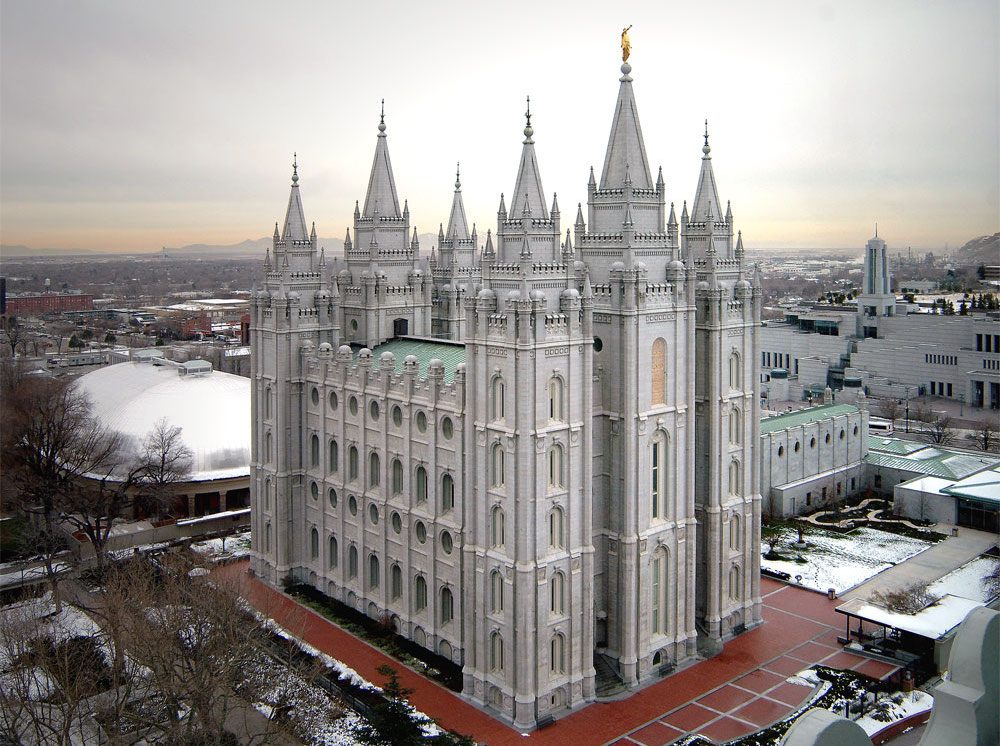
The Church of Jesus Christ of Latter-day Saints temple in Salt Lake City, Utah. (Photo: Michael Whiffen/Creative Commons)
Much secrecy surrounds the sacraments that take place in the temples of the Church of Jesus Christ of Latter-day Saints. For Mormons—whose numbers can be difficult to quantify—the temple is the center of family and community life. It is also where ”eternal marriages” take place.
Known within the Church as “sealing,” eternal marriages bind a couple together forever. As in, forever—beyond mortality. In fact, sealings can be performed on people who have already died, to ensure they are eligible for entry into the highest echelons of Mormon heaven. Posthumous sealing—in which a deceased person is wedded to either another deceased person or one who is still alive—is performed regularly within the Church, but the details of the ceremony are not usually disclosed to people outside the faith.

To get an insight into what happens before, during, and after a posthumous sealing, we spoke to Eldon Zeller*, a 36-year-old ex-Mormon. Zeller is the youngest of seven, born into a family that has been Mormon for several generations. He grew up in Utah, served a two-year mission in Brazil at 19, and left the church five years later, in 2003. He now lives in California, where he’d rather not be known as the ex-Mormon guy—hence the pseudonym.
Could you talk a bit about the concept of sealing in general?
Mormons believe there’s various degrees of heaven. In order to gain entrance to the highest one, where you get to be a god and create your own worlds, you have to have received certain ordinances. They call them “keys.” And one of those is being married. So people who have died and never had the chance to get sealed—that’s what Mormons call getting married in the temple—can have it posthumously done for them. And that’s the point of going to the temple and doing sealings.
So during your time after you did your mission, you began performing sealing ceremonies?
Yes. So the way it works is, throughout your life in Mormonism, at different ages, typically, you are old enough to perform certain ceremonial rites. You start doing stuff when you’re eight—that’s when you get baptized. And if you’re a male, when you’re 12, you get the priesthood. And there are various levels in the priesthood that you sort of upgrade to. There are higher levels as you have different birthdays.
By the time you’re 18, 19 years old, which is older than you need to be to be eligible to be a missionary, then you get to do the big one, which is go to the temple and take out your endowment. And once you’ve taken out your endowment, then, the point of visiting the temple from that point on is doing those ceremonies for the dead. So the first time, you go to do it for yourself, and then on repeat visits you’re doing it for the dead.

A statue of Jesus at the temple in Salt Lake City. (Photo: Steve Jurvetson/Creative Commons)
Can anybody who is in the Mormon faith who has reached that age of priesthood—or whatever level it is—perform those sealings?
No, you have to be a “temple recommend” holder. So that means that you have to visit your bishop, who is over your local congregation, and you have a worthiness interview with them. He runs through a set of questions to ask about your personal worthiness and purity, and if you can affirmatively state to all the questions that you’re worthy, then he will sign your temple recommend. And all that should be signed by your state president, who’s a little higher up. And that recommend is good for, I think it’s one year. Then when you go to the temple you have to show them your current recommend to be allowed in.
Do you remember any of the [worthiness interview] questions that got asked?
Yeah, some of the questions are, “Do you pay your tithings?” You know, you have to pay 10 percent of your income to the church. “Do you keep the word of wisdom?,” which is the Mormon rules about not drinking alcohol or coffee, or smoking or taking drugs. “Do you associate with anyone whose interests are counter to the church, or who are enemies of the church?” You’re not allowed to have membership in groups who could be deemed as enemies. And then just your standard, “Do you believe in God and his son, Jesus Christ, and do you accept him as your savior?” That kind of stuff.
Assuming you pass all that and you get recommended, you are then able to perform sealings?
Yes, then you have a current temple recommend and you can go whenever you want.
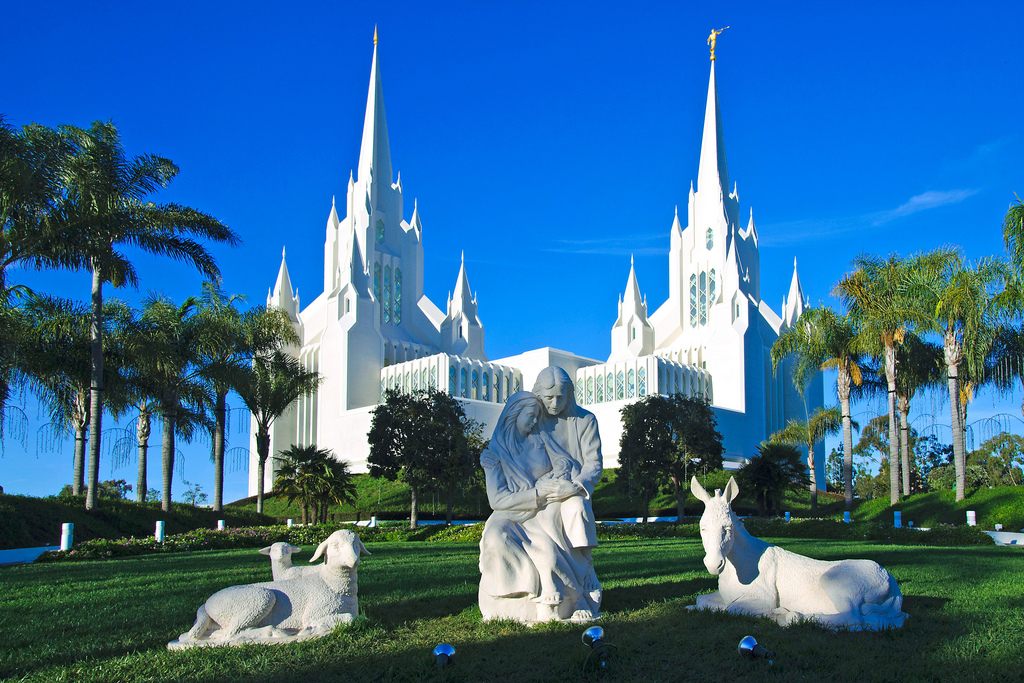
The Mormon temple at La Jolla in California. (Photo: SD Dirk/Creative Commons)
The people who have died, who become part of these sealings, does there have to have been a demonstrable desire before they died to become sealed to a particular person?
No. The Mormons think that this has to be done for every person who has ever lived. And then, on the afterlife side of things, there are Mormon missionaries going around who tell people, “Hey, somebody on Earth did this ceremony for you, would you like to accept it or not?” And they just say yes or no.
Oh, okay. So they’re informed in the afterlife.
They’re informed in the afterlife that that was done on their behalf, yeah.
So take me through how that ceremony looks, what the process is.
You dress all in white, so men would wear white suit pants and a white shirt and a white tie. And probably a white suit coat. White shoes. Women would wear a white dress.
When there’s the endowment ceremony, which is where you make a series of promises to God, and you promise to keep the whole temple ceremony secret and never talk about it. You do the special hand positions and handshakes at that point. And you put on different clothing. You put on a robe and a hat and an apron that is green and looks like leaves to symbolize Adam in the Garden of Eden, when they realized that they were naked and they dressed themselves in leaves. You’re wearing all that stuff, the apron and this robe and the funny hat. I think you’re wearing all that when you do the sealings. Because the sealing is like the highest ordinance. It’s the holiest thing.
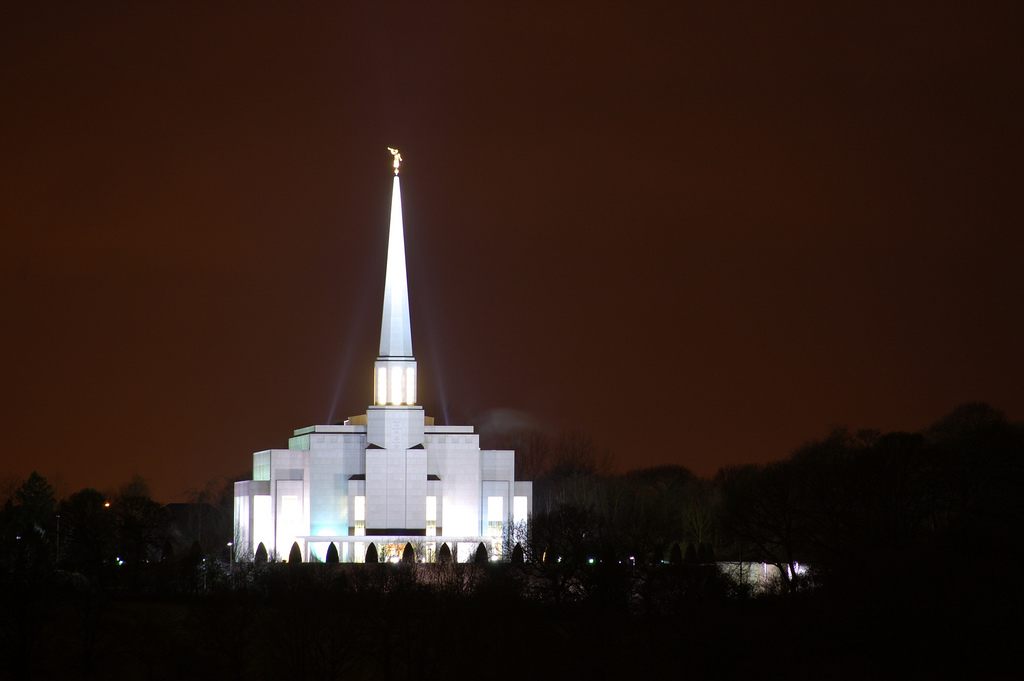
The Mormon temple in Preston, Lancashire. (Photo: Matt J Newman/Creative Commons)
But it’s not just the person performing the sealing who wears this, it’s everybody in the temple?
Okay, so you’ve got a woman and you’ve got a man, and they’re kneeling. There’s a special room—a set of rooms in the temple so they can do a lot of these at once—that has an altar in it, and there are mirrors on all walls. And then there’s basically a priest. The priest is wearing a white suit, he’s not wearing the whole get-up. And he’s performing the sealing, so he’s saying, “Do you take her to be your blah blah blah for all time and eternity?”
When he says the names, he uses the names off of a card. And you know that you’re basically like an actor. So my name is going to be Tom Smith and I died in 1750. That’s what it will say on the card. And her name is going to be Mary Jones and she died in whatever year. And I’m there representing Tom and she’s there representing Mary.
So it’s by proxy.
That’s actually the word they use, they call it a proxy.
And is it always two dead people being married to one another, or can one dead person be married to a living person?
They actually do sealings where one person is alive and one is dead. So if you were married in your lifetime and your husband died, and he wasn’t Mormon, but you were, you could go to the temple and get married to him in a Mormon wedding. And then that would count when you’re dead.

A temple in St George, Utah. (Photo: Jeffrey Pratt/Creative Commons)
You mentioned before that two people who were actually married when they were alive would get sealed. Is that because their marriage doesn’t count within Mormonism?
Right, it does not count. If it didn’t happen in a temple, by a priest in the temple, then that marriage ended when the person died.
You were saying that a living person can be [sealed] to someone who has died. Can the living person re-marry a living person after that?
Yeah. So what people will do is they’ll marry—like I said, you loved your [non-Mormon] husband and he died, and you get sealed to him. Then it’s like, when you die, he’ll be waiting for you. But while you’re here in life, you still have some time yet, you may as well have fun and get married to somebody else. But that one you’re not going to do in the temple, you’ll just do that one at like, City Hall. And then when you die, that one’s over and your eternal marriage to your husband picks up.
Okay, so that’s the one that really matters.
That’s the one that really matters. The other one was just for the time being while you were still alive.
What would be the benefit of sealing two people together who have been dead for hundreds of years?
Well, because the way they think about it, Tom and Mary got married in real life and they loved each other and then they died. They never had the chance to get married in the Mormon temple, for whatever reason—probably the church didn’t exist yet. [Joseph Smith’s Book of Mormon, the church’s foundational text, was published in 1830.] So they would love to be married in the afterlife, and they need someone on Earth to do that in the temple.
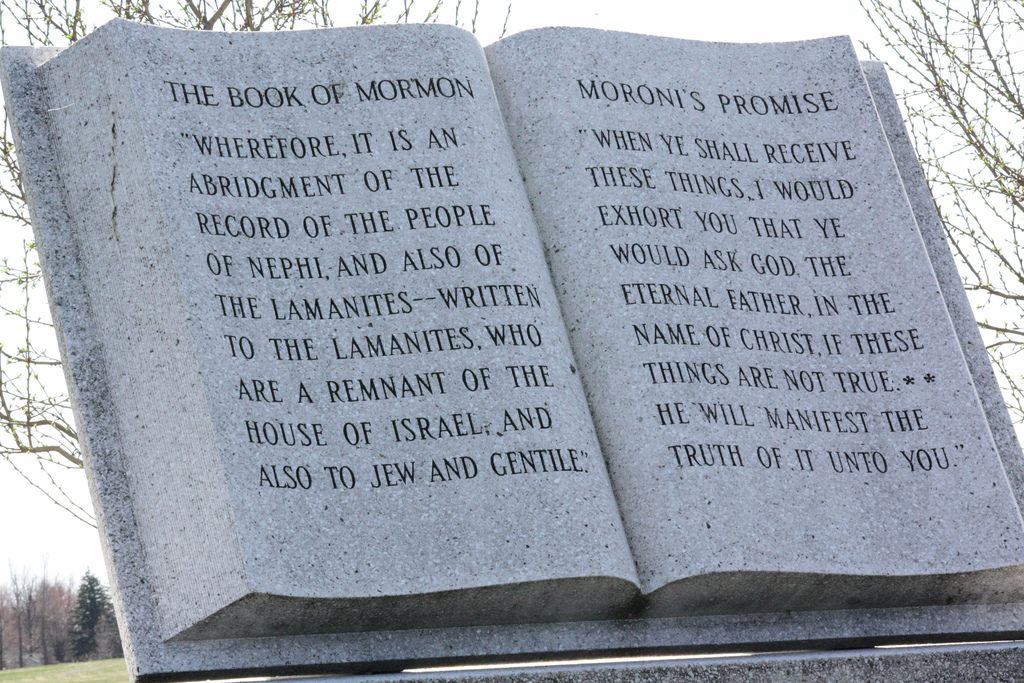
(Photo: jon collier/Creative Commons)
Is this related to the [Mormon practice of] baptism by proxy?
Yes. You get a whole series of things. You start with baptism, then you upgrade to getting your endowment, and then the last piece is you’ve got to be married. They’re sort of like the keys to heaven.
Right. And this is all so that people can trace their genealogy and make sure that their entire family is certified as Mormon for eternity?
That’s not really the point though, no, the point of it is that God told his followers that everybody had to do this. You know how Christians think that they need to share the truth with other people? That’s the whole idea of proselytizing. Same thing goes for the dead. The Mormons are just doing this because they know the truth and they’re going to do you a favor, because “God told me to do so, to get this stuff done for you.” And going to the temple and doing these things is like doing the Lord’s work.
What was the reason you left the church?
Not really a specific reason, I just kind of stopped believing in it. I think it’s similar to how people grow out of things, you know, like at some point in your life you don’t believe in the tooth fairy or Santa Claus. I actually decided I was atheist and didn’t believe in the church or anything, so I just sort of grew out of it, I guess.
So now that you’re not in the church anymore—looking back on these ceremonies, how do you feel about them?
Well, I realize how strange they are, of course. They were just kind of part of growing up, because when you’re young, once you’re 12 years old you can go to temple and do baptisms for the dead. So you kind of get used to the idea, from being raised in the church, of going to the temple. And the temple is the central focus of Mormon life and Mormon communities. So it’s just kind of built in. I guess I didn’t think it was weird at the time, I thought it was just kind of like a real special holy thing. And I was pretty into church back in those days, so I liked it.
*Name has been changed.
Correction (9/25): The introduction originally stated that a Mormon temple is the only place where you can be baptized into the faith. It is the only place where you can be posthumously baptized into the faith.





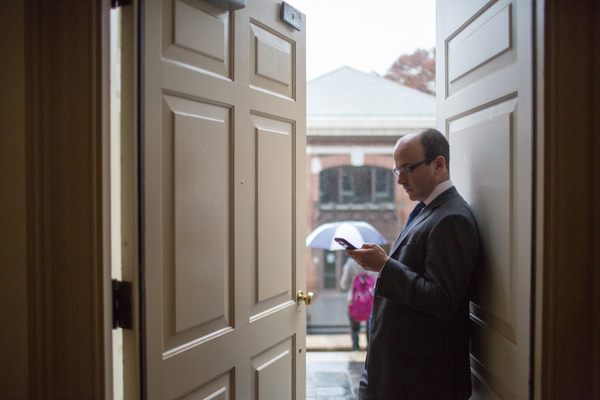

Follow us on Twitter to get the latest on the world's hidden wonders.
Like us on Facebook to get the latest on the world's hidden wonders.
Follow us on Twitter Like us on Facebook